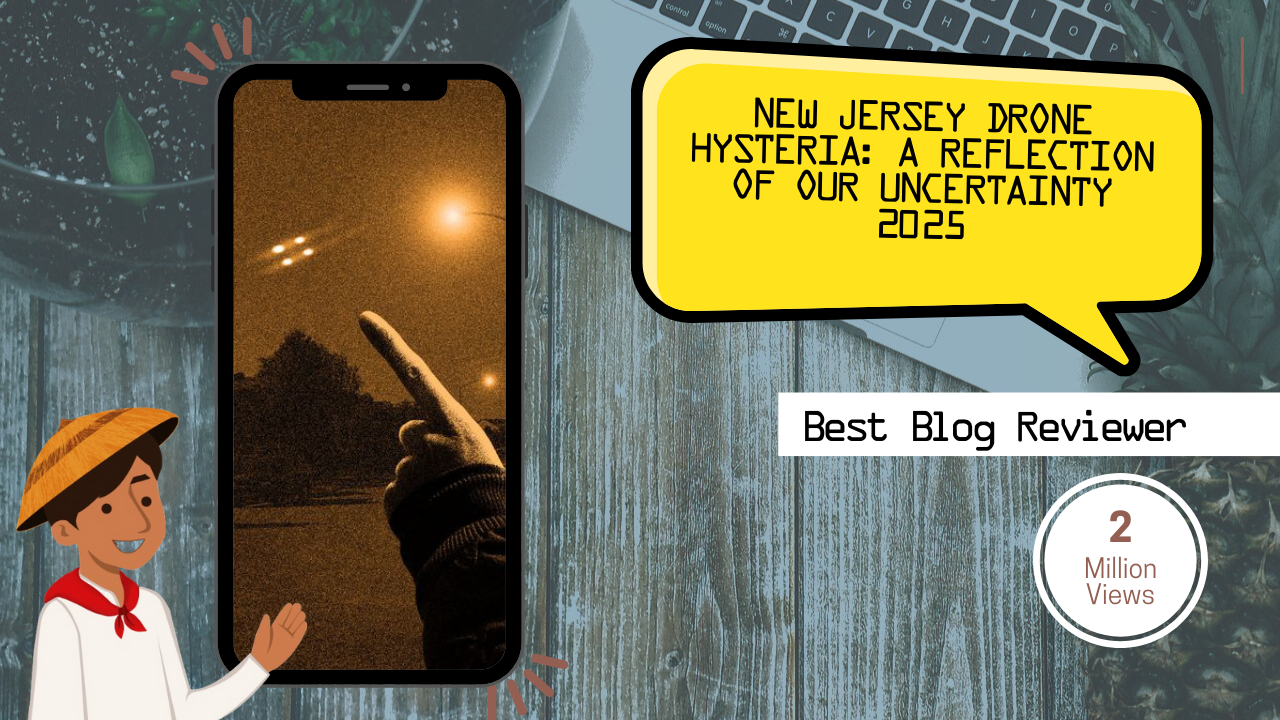In late 2024, New Jersey became the epicenter of a peculiar phenomenon: a widespread hysteria over mysterious drone sightings. This event has not only captivated the state but also sparked a broader conversation about the nature of uncertainty and the human tendency to seek answers in the face of the unknown. As we delve into the details of this drone hysteria, we uncover a salient truth: no one knows anything.
Recent article: Revolutionizing Gaming: PlayStation and AMD Partner to Infuse AI into Next-Gen Games 2025
The Onset of the Hysteria
The drone sightings began around November 18, 2024, when residents across New Jersey started reporting unusual objects in the sky. These objects, described as drones, exhibited erratic flight patterns and varied in size, with some appearing as small as suitcases and others as large as SUVs. The sightings quickly spread, with videos and eyewitness accounts flooding social media platforms.
Government Response and Public Reaction
The Federal Aviation Administration (FAA) responded to the growing concern by imposing temporary flight restrictions over 22 communities in New Jersey. The restrictions were enacted at the request of federal security partners, though the FAA did not provide explicit details about the nature of the threat. This lack of transparency only fueled the public’s anxiety, leading to a surge in conspiracy theories and speculation.
Politicians from both sides of the aisle weighed in on the situation, with some calling for immediate action and others urging calm. President-elect Donald Trump claimed that the government was hiding something, while Senator Chuck Schumer emphasized the need for advanced technology to identify the drones. The public’s frustration grew as elected officials and federal agencies failed to provide clear answers.
Media Coverage and Misinformation
The media played a significant role in amplifying the hysteria. News outlets reported on the sightings with sensational headlines, often recycling easily disproved photos and videos from social media. Some regional media outlets and politicians made outlandish claims, such as drones being deployed by an Iranian mothership or searching for radioactive material. These baseless theories only added to the confusion and fear.
The Role of Social Media
Social media platforms became a battleground for conflicting narratives and misinformation. Users shared videos and photos of the supposed drones, with many interpreting regular commercial aircraft as mysterious objects. The viral nature of these posts created a feedback loop of fear and speculation, making it difficult for authorities to manage the situation effectively.
The Psychological Impact
The drone hysteria had a profound psychological impact on the residents of New Jersey. The constant reports of drones and the lack of definitive answers led to heightened anxiety and paranoia. People began pointing lasers at commercial flights, a dangerous activity that could blind pilots and compromise safety. The FAA issued warnings against such actions, but the hysteria persisted.
Lessons Learned
The New Jersey drone hysteria serves as a stark reminder of the human tendency to seek certainty in uncertain situations. In the absence of clear information, people often turn to conspiracy theories and speculation to fill the void. This event highlights the importance of transparent communication from authorities and the need for critical thinking in the face of uncertainty.
Conclusion
The New Jersey drone hysteria of 2024 exposed a salient truth: no one knows anything. In a world filled with information and misinformation, it is crucial to approach uncertain situations with a healthy dose of skepticism and a willingness to seek out verified facts. As we move forward, let us remember the lessons learned from this event and strive to foster a more informed and rational society.
